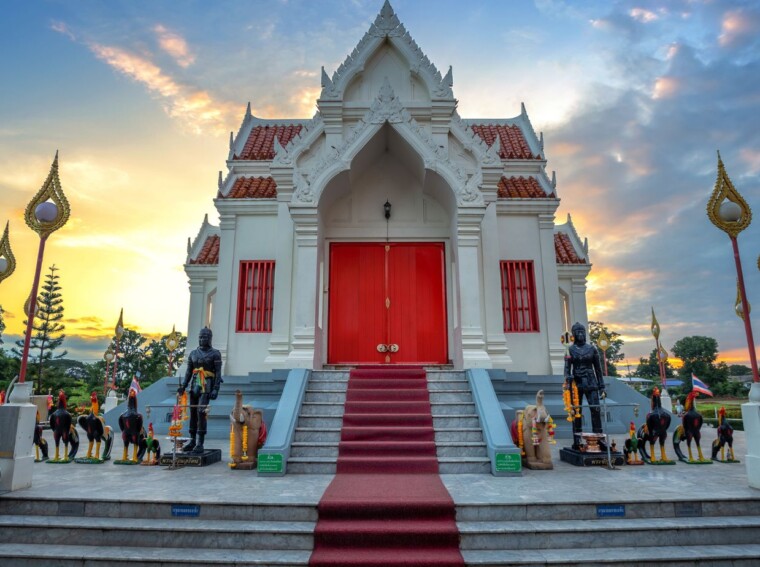Many Major Religions Spread Through
Throughout history, trade has played a crucial role in the dissemination and spread of many major religions. As goods and ideas traveled along ancient trade routes, religious beliefs and practices were exchanged, adapted, and adopted by different cultures. This intertwining of commerce and spirituality not only fostered cultural exchanges but also contributed to the diffusion of religious ideas across vast distances.
One notable example is the spread of Buddhism from its birthplace in India to other parts of Asia. During the time of the Silk Road, Buddhist monks accompanied traders on their journeys, carrying their teachings with them. As a result, Buddhism found fertile ground in countries like China, Japan, Korea, and Tibet. The exchange of goods along these trade routes facilitated cultural interactions that led to the assimilation and propagation of Buddhist beliefs.
Definition of Major Religions
When discussing the spread of major religions through trade, it’s important to have a clear understanding of what constitutes a major religion. While the definition may vary depending on cultural and historical contexts, there are certain characteristics that commonly define these religions.
- Widespread Adherents: Major religions typically have a significant number of followers across different regions or even continents. They attract large communities of believers who adhere to their teachings and principles.
- Historical Significance: Major religions often have deep historical roots, with origins dating back centuries or even millennia. They have endured the test of time and played crucial roles in shaping societies and cultures throughout history.
- Central Beliefs and Doctrines: These religions possess core beliefs, doctrines, or scriptures that serve as guiding principles for their followers. These teachings provide moral guidance, explain the nature of existence, and offer answers to life’s fundamental questions.
- Organizational Structures: Major religions often establish hierarchical structures such as religious institutions, clergy members, or formal leadership systems to oversee their operations and ensure continuity in spreading their faith.
- Influence on Daily Life: A defining characteristic of major religions is their influence on various aspects of adherents’ lives; they encompass not only spiritual practices but also rituals, customs, ethical codes, dietary guidelines, social norms, and more.
- Cultural Impact: Throughout history, major religions have had a profound impact on art, architecture, literature, music, language development, societal norms/values/ethics/morals etc., festivals/events/ceremonies and other cultural aspects within the communities where they flourished.

The Role of Trade in the Spread of Religions
When exploring the spread of religions, it becomes evident that trade has played a significant role in their dissemination across different regions. Through the exchange of goods and ideas along ancient trade routes, major religions have found fertile ground to expand their influence. Let’s delve into how trade facilitated this remarkable phenomenon.
- Cultural Exchange and Adaptation: Trade routes served as conduits for cultural exchange, allowing merchants from diverse backgrounds to interact with one another. As they traded goods and conducted business transactions, they also exchanged knowledge, beliefs, and customs. This cross-cultural interaction provided opportunities for religions to be introduced to new territories.
For instance, the Silk Road played a pivotal role in spreading Buddhism from India to China during the ancient times. As Buddhist traders traveled along this expansive network of trade routes, they not only brought merchandise but also shared their religious teachings with local communities. Over time, Buddhism adapted to Chinese culture and assimilated Chinese customs while retaining its core principles.
- Propagation by Merchants: Merchants have long been influential agents in disseminating religious ideas through their extensive travels. These enterprising individuals often carried not just commodities but also spiritual beliefs to far-flung corners of the world.
In medieval Europe, Muslim traders known as Moors played a vital role in introducing Islam to regions such as Spain and North Africa through their commercial activities. They established flourishing trading networks that allowed them to share Islamic teachings with indigenous populations who were receptive due to economic ties.
- Patronage by Rulers: Trade connections frequently led rulers or powerful elites to embrace foreign religions as a means of strengthening political alliances or enhancing social cohesion within multicultural societies.
An exemplary case is Emperor Ashoka’s patronage of Buddhism in ancient India during his reign around 268 BCE. As an avid supporter of trade networks throughout his empire, Ashoka used his influence and resources to propagate Buddhist teachings both within his realm and beyond. Through his efforts, Buddhism spread to neighboring countries like Sri Lanka, Myanmar, and Afghanistan.
- Religious Centers at Trade Hubs: Major trade hubs often became centers of religious activity, attracting pilgrims and devotees from diverse backgrounds. These bustling commercial nodes provided an ideal platform for the dissemination of religious ideologies.
One notable example is Mecca in Saudi Arabia. Even before the advent of Islam, Mecca served as a significant trading center due to its strategic location along the Arabian Peninsula trade routes. With the rise of Islam, it became not only a thriving marketplace but also the spiritual epicenter for Muslims worldwide as millions gather there annually for Hajj pilgrimage.
